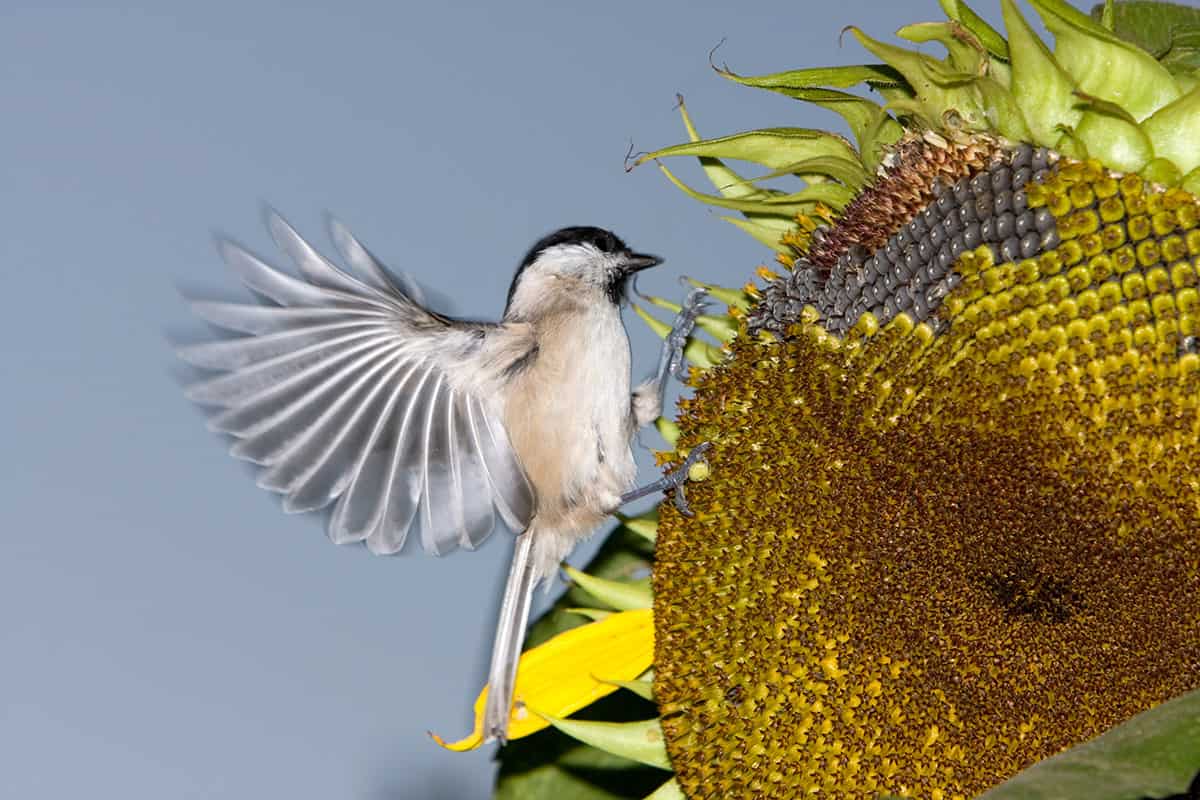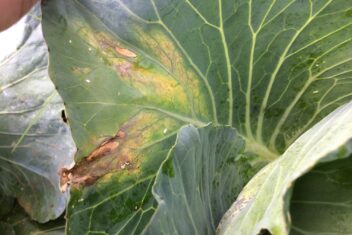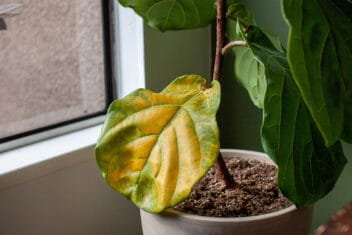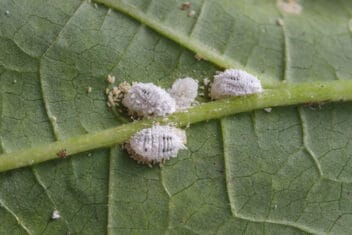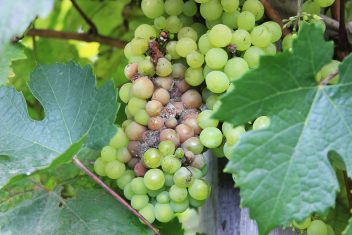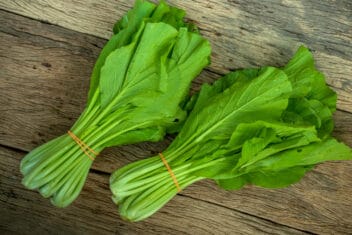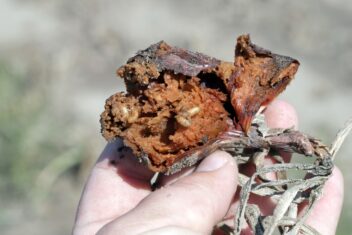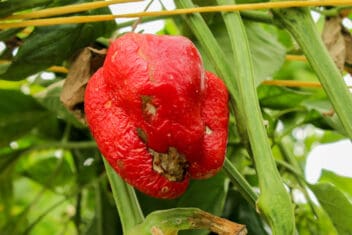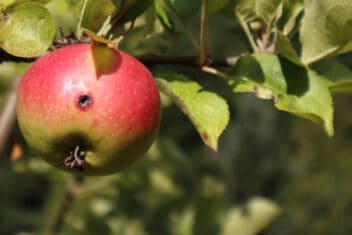Who doesn’t love sunflowers? These beautiful blossoms are symbols of hope worldwide, as they perpetually turn their bright, happy faces towards the sun as it moves. The bad news is that there are a host of sunflower pests and diseases that can cut these beauties down before they have a chance to thrive.
Let’s take a look at some of the most common issues you’re likely to come across when growing sunflowers. Some are easier to deal with than others, but all have their own fixes.
Common Animal and Insect Sunflower Pests
I don’t generally like to use the word “pests” when it comes to animals, but it’s an accurate term. After all, dealing with these critters is a pain in the backside, especially when you find yourself yelling and chasing them away with brooms in the middle of the night.
1. Raccoons
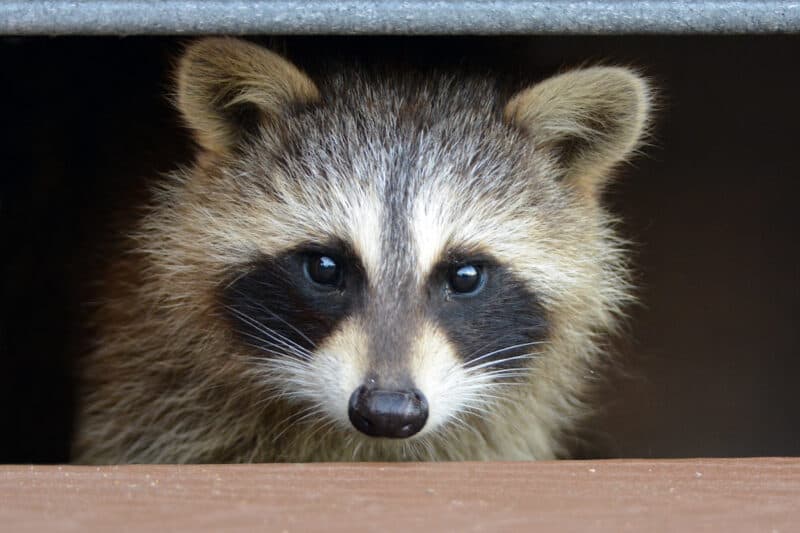
In my experience, raccoons are some of the worst interlopers when it comes to eating sunflowers. They’ll eat the sprouts, the young plants, the buds… everything. Plant your flowers well away from walls or fences that these guys can climb easily. Then, mix olive oil with garlic and cayenne pepper, and use a paintbrush to spread this on the stalks.
Raccoons have sensitive noses and will veer away from these strong, bitey scents. I’ve found that they also hate the scent of lavender, so a bit of Dr. Bronner’s lavender Castile soap (diluted into spray) is a good deterrent when spritzed around their stems.
2. Squirrels

Unlike raccoons, squirrels will only take out your sunflower plants when they’re under a foot tall. That is until they mature and the seed heads develop. Then, they’ll scurry up the stalks, gnaw the heads off, and do unspeakable things to the seeds.
Fend them off by planting really thorny thistles around your sunflowers so they can’t get close. Also, make baffle cones below the flower heads out of plastic. You know those ridiculous cones you put on dogs’ necks after surgery, so they don’t pull their stitches? Like those, with the openings aimed downwards. The squirrels can’t get past them, thus saving your seeds for future snacking.
3. Birds
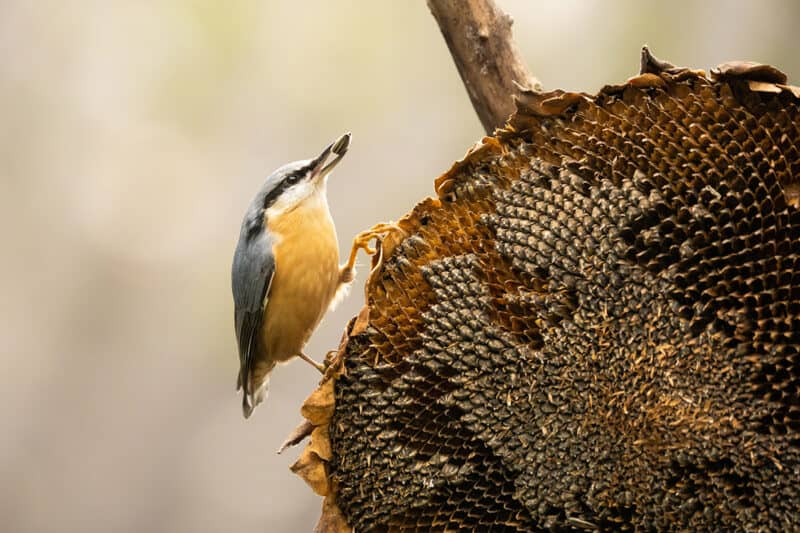
Do you know what other animals love to eat sunflowers? Birds. They won’t go after the seedlings, but they’ll annihilate the seed heads when they start to mature. You can cover them with really fine bird netting to keep them away. The same kind of mesh you use for floating row covers to keep butterflies off your brassicas works best.
Once the seed heads start to mature, you can also cover them with big paper bags.
Believe it or not, scarecrows will do the trick as well. Sometimes, they’ll also keep raccoons away, especially if you hang noisemakers like aluminum cans or plates off them. If you don’t want to create a scarecrow, hang some Christmas tinsel off the plants. The movement and glitter should fend off almost all species… except magpies and crows. Because shiny.
4. Ants
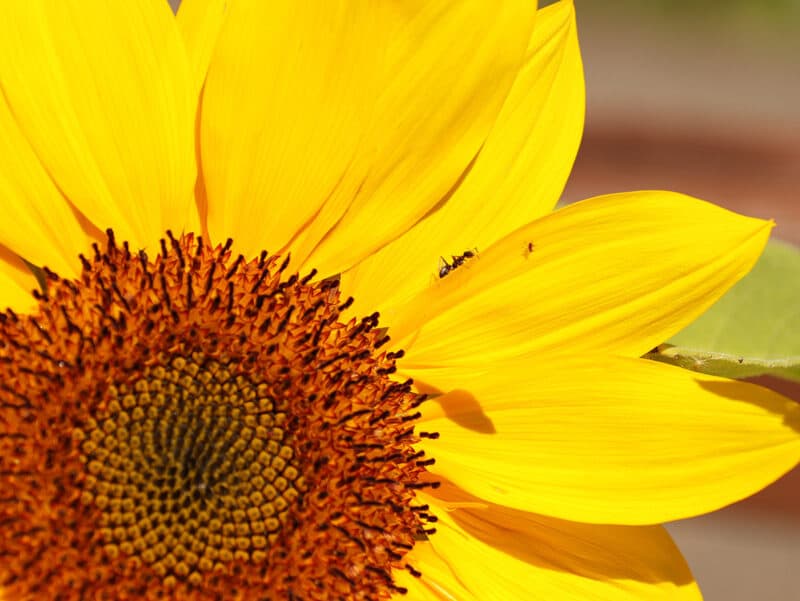
You might think I’m joking here, but I’m not. Most people don’t consider ants to be common sunflower pests, but they certainly can be! I kept losing sunflower seedlings whenever I planted them and thought I was dealing with some kind of damping-off disease. The stalks seemed to dissolve just above ground level, which is usually a sign of a soil-borne pathogen.
Wrong-o. It turns out I had been planting them in an area that the local ants had claimed as their own. How did I discover this? I went out early one morning and saw them gnawing on the stalk until the seedling keeled over. Rather than annihilating these insects on their home turf, we planted a new batch of seedlings somewhere else, and they’ve been thriving ever since.
5. Grasshoppers
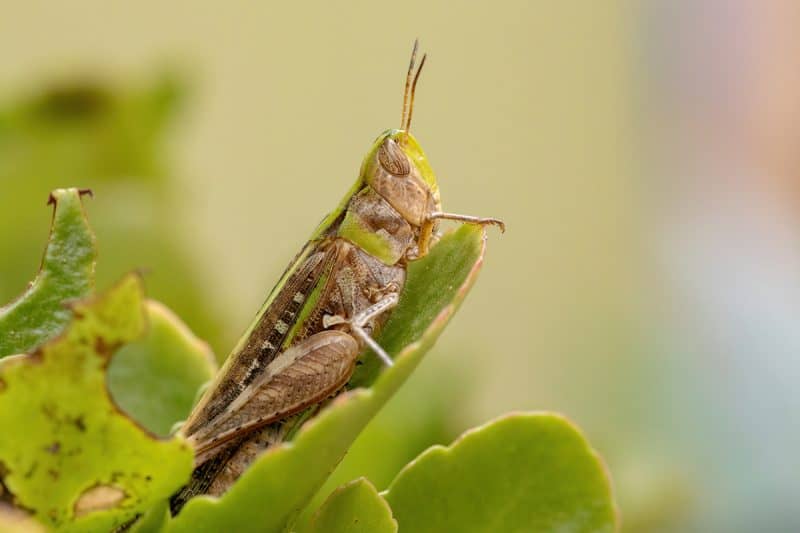
Like the locusts of Biblical plague proportions, hordes of grasshoppers can take out an entire field of sunflowers in a matter of days. We had a huge wave of them last summer, and they ate just about everything growing on the property. Fortunately, toads and snakes absolutely love to munch on young grasshoppers.
Plant your sunflowers close to a pond, if you have one, or provide a good water source for toads and frogs. They’ll help to keep the hopper population down around your crop.
6. Sunflower Beetles
If sunflower beetles eat leaves on larger plants, they won’t be able to do much damage. Where problems occur is if they get their mandibles on younger plants. They won’t just eat the true leaves: they’ll eat their way through the stems and buds as well. You know what’s a great deterrent for beetles, however? Double-sided tape.
Wrap the bases of your sunflower stalks with a bit of medical gauze for protection, and then wrap that in double-sided sticky tape. It’ll catch all kinds of predatory insects that are just itching to attack your flowers.
7. Sunflower Borers
Sunflower borers and stem maggots burrow into the stems of sunflower plants to feed. This can quickly kill the vegetation and other parts of sunflower plants, especially in large numbers. Sadly, there’s really not much you can do to treat these once they’ve shown up. They live in the soil, and you won’t know they’ve wreaked havoc until it’s too late.
Destroy affected plants, and avoid re-planting sunflowers there for at least two years. Practice regular crop rotation, and till well to bring the larvae up to the surface for birds to eat.
8. Cutworms
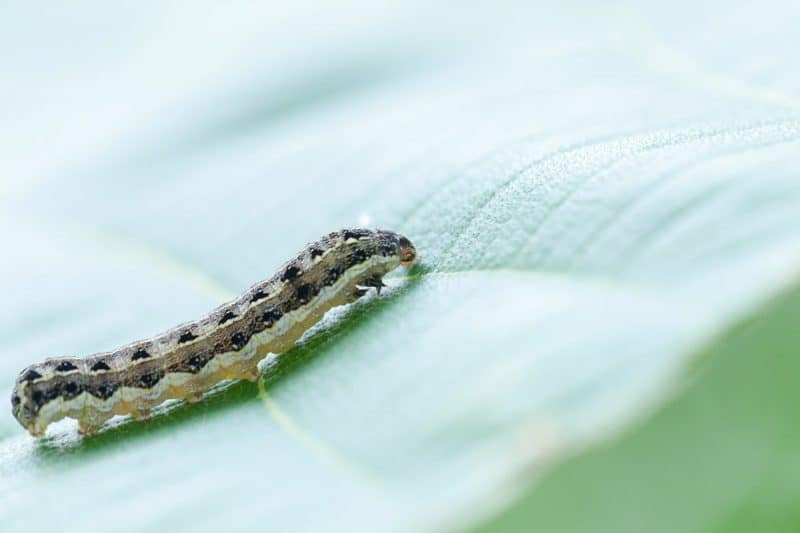
True to their name, these worms “cut” a swathe through whatever leaf they happen to be crawling across. They like to nestle into soil hollows during the day and emerge at night. Aside from insecticides, there are a couple of good ways to battle these bastards.
One is the aforementioned sticky tape on your sunflower stalks. The other is to let your chickens roam around through the sunflower stalks. They’re often quite fond of cutworms and will peck them out of their daytime hidey holes to snack on. If you don’t have chickens, borrow a couple for a few days.
9. Aphids

Are there any plants that these creatures won’t attack? I hate these jerks. Okay, so they don’t like strong scents, so be sure to plant plenty of garlic chives, sage, and nasturtiums around your flowers. Spray the plants with neem oil, and scatter some diatomaceous earth around for good measure. Oh, and be sure to introduce plenty of ladybugs if you don’t already have them around.
Our guide has more tips.
10. Sunflower Moths
Did you know there was such a thing as a sunflower moth? NEITHER DID I. Well, not until I found their squiggly little larvae booping around inside my sunflower florets. I never came across these in the UK, but they’re quite common throughout the United States and Canada. The species is Homoeosoma ellectellum, and they prey on other Asteraceae family members, particularly Echinacea spp. and Jerusalem artichokes (Helianthus tuberosus).
Plow the soil deeply before sowing seeds to kill any eggs or larvae. Oh, and choose moth-resistant sunflower strains whenever possible.
Sunflower Diseases
In addition to the bevy of sunflower pests mentioned above, these flowers are susceptible to several different fungal diseases and blights.
11. Sunflower Rust
This fungus loves sunflowers and other Helianthus species (like those sunchokes we mentioned earlier). It’s challenging to eradicate, as it can survive down to -40°F winters. It loves cool, damp environments, and sticks around on leaf and stem detritus. As far as sunflower pests and blights go, this is one of the most common.
You can try to avoid it by clearing away any foliage or other residue left by your sunflower plants. To treat it, dissolve 10 plain aspirin tablets in a gallon of water, and spray the plants with this every few days.
12. Stem Canker
This usually shows up in hot, humid environments after there’s been a lot of rainfall. Brownish-black sores appear on the stems and rot their way through, killing the plants. Most people use heavy-duty fungicides to treat this, but sometimes strong garlic spray can work.
If your plants get stem canker, destroy them by burning, clear away any weeds or detritus, and treat the earth below. Then don’t plant again for at least five or six years.
13. Leaf Spot
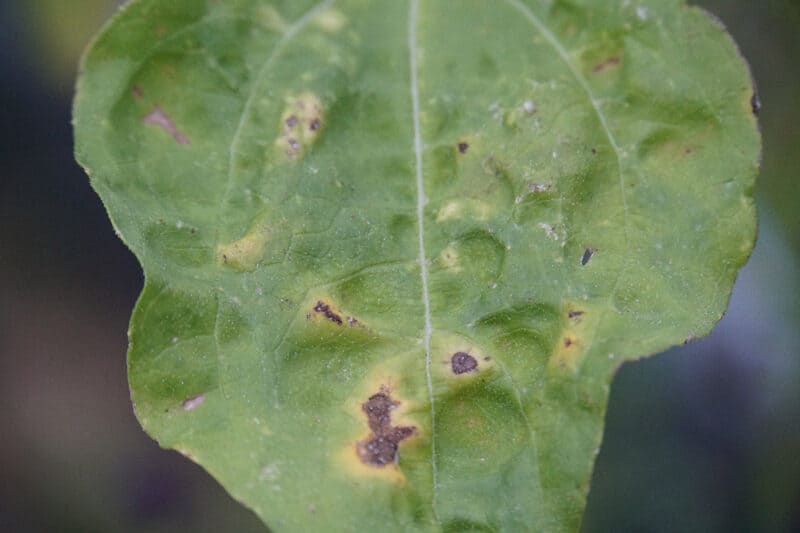
You’ll recognize this fungal issue when it appears. Black spots start showing up on the leaves, which wilt and then fall off the plants. Choose disease-resistant varieties, and make sure you don’t grow sunflowers in the same spot for five years. (Seriously, that’s the healthiest way to cultivate them: crop rotation is your friend.)
If it turns up, you can treat it with garlic spray or diluted cider vinegar and hope for the best.
14. Gray Mold
Are your sunflower plants covered in fuzzy gray mold? Yeah, that’ll happen… especially during hot, damp summer weather. If this is a problem in your area, be sure to choose disease-resistant varieties. Treat the seeds with fungicide (like soaking them in garlic water) before planting them, and make sure you fertilize the soil well.
To treat gray mold, use diluted apple cider vinegar or aspirin spray.
15. Powdery Mildew
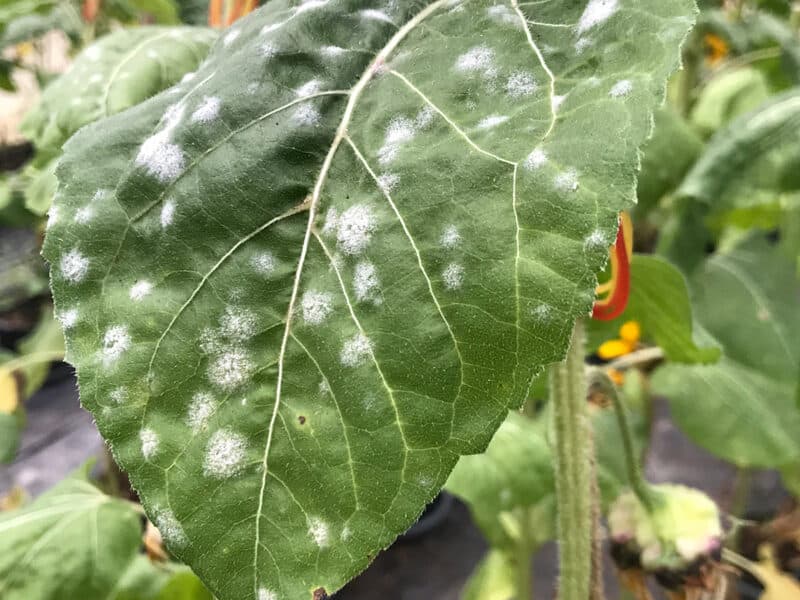
Who doesn’t love this stuff when it shows up? Yes, that was sarcasm. Powdery mildew can attack just about any plant and looks as though talc or icing sugar has been dusted on your plants. As with other fungal sunflower pests, make sure to choose disease-resistant varieties whenever possible. Clear away any detritus from around the plants, and treat the mildew with apple cider vinegar or aspirin spray.
16. Black Stem
I’ll be honest with you here: I’ve only encountered black stem once and wasn’t able to treat it successfully. My approach was to treat it with organic, homemade fungicides that normally work well on my other plants. It didn’t work on black stem, and nursery staff recommended a hardcore chemical fungicide instead.
I chose not to go that route and just destroyed (burned) the plants instead. You choose the method that works best for you, but I’d rather destroy a few plants than add potentially dangerous chemicals to my soil.
Best Practices to Avoid Problems
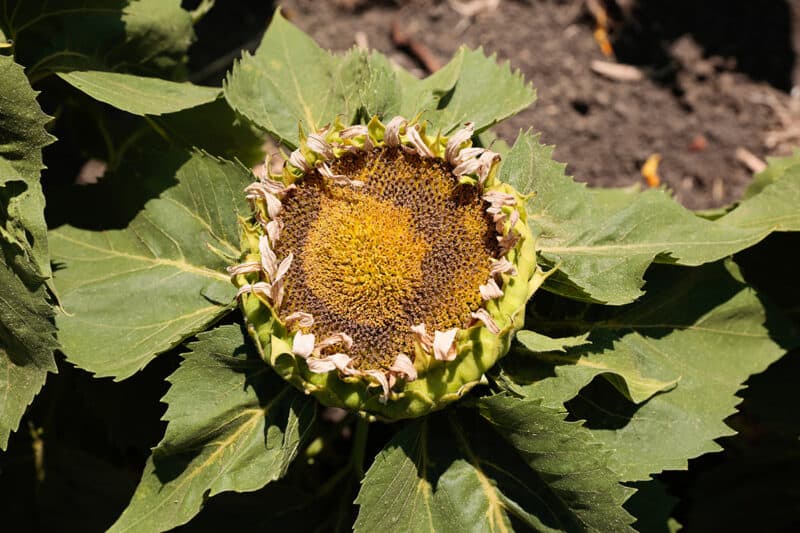
These are the main sunflower pests and diseases you’ll potentially face when growing them. Remember that there are many disease-resistant varieties out there that fend off pathogens and pests well. Keep your soil healthy and well-fed with a balanced fertilizer, and practice regular crop rotation.
Always rotate your sunflower beds, so you don’t grow in the same space until five or more years have passed. Choose healthy cover crops to replenish the soil in between, turning the soil over deeply so fungicides will be killed by hot summer sunshine.
When you grow a successful sunflower crop, you’ll feel an amazing sense of achievement that these techniques worked so well. And as a bonus, you’ll have a ton of delicious seeds to snack on.
